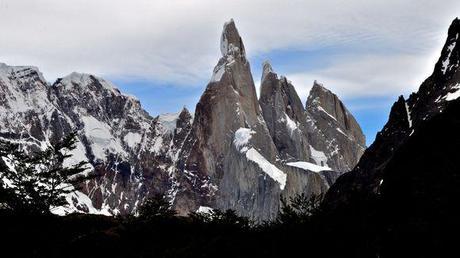 If you've been following climbing news over the past few weeks, you've probably already heard about the bold climb of Cerro Torre by Jason Kruk and Hayden Kennedy. The mountain, which is amongst the more famous in the world, has a lot of history to it, and these two young men were able to nab the first ascent, by "fair means," along its Southeast Ridge. That "fair means' qualifier is an important one along that route, and what the climbers did after their summit has reverberated through the climbing community and left a more lasting impact than their successful climb itself.
If you've been following climbing news over the past few weeks, you've probably already heard about the bold climb of Cerro Torre by Jason Kruk and Hayden Kennedy. The mountain, which is amongst the more famous in the world, has a lot of history to it, and these two young men were able to nab the first ascent, by "fair means," along its Southeast Ridge. That "fair means' qualifier is an important one along that route, and what the climbers did after their summit has reverberated through the climbing community and left a more lasting impact than their successful climb itself.Standing just 3127 meters (10,262 ft) in height, Cerro Torre, located in Patagonia, is not known for its altitude. Instead, it is the incredible technical difficulty of the climb that is the draw. Back in the late 50's the towering rock spire was the subject of intense scrutiny by some of the best climbers of the day, including Walter Bonatti, who failed to scale its walls in 1958. A year later, rival Cesare Maestri went to Cerro Torre and claimed that he, and climbing partner Toni Egger, reached the top, but that on their descent, Egger was swept off the mountain by an avalanche, taking their camera, and summit evidence, with him. The climbing community of the day took Maestri at his word, and celebrated the accomplishment of a mountain that was previously deemed unclimbable.
In the subsequent years, Maestri's story fell under extreme scrutiny, and over time, the community changed its tune. Critics accused him of orchestrating a hoax, and the Italian fell out of favor with many. In an effort to reclaim his damaged reputation, Maestri returned to Cerro Torre in 1970 in an attempt to go back up the route that he climbed a decade earlier. But instead of climbing it using the regular equipment and techniques of the day, he used a gas-powered air compressor to blast bolts into the rock face, something that had never been done before. Using more than 400 bolts, Maestri proceeded up the mountain, building bolt ladders all the way, but even using that technique, he stopped short of the summit due to a large ice cornice at the top. That didn't stop him from declaring it as the second successful summit however, and he left his air compressor in place as one final insult, earning it the moniker of The Compressor Route.
When Kruk and Kennedy finished their climb back on January 16, they took advantage of the unusually good weather to do a little clean-up on the Compressor Roue. The two men removed more than 125 bolts from the wall, which had been in place since Maestri had left them there back in 1970. The removal of those bolts cleared out the route, making it a more naturally challenging ascent once again, but it set off quite a debate in the climbing community once again, as people argued whether or not the bolt removal was the right thing to do.
National Geographic Adventure has a much more in depth, and better, story on the entire affair, including the history of Cerro Torre and the reaction, both good and bad, to this most recent ascent. It is an all around good read and definitely worth a look if you're interested in climbing history and the politics that can be associated with it. You can read the entire story by clicking here.

